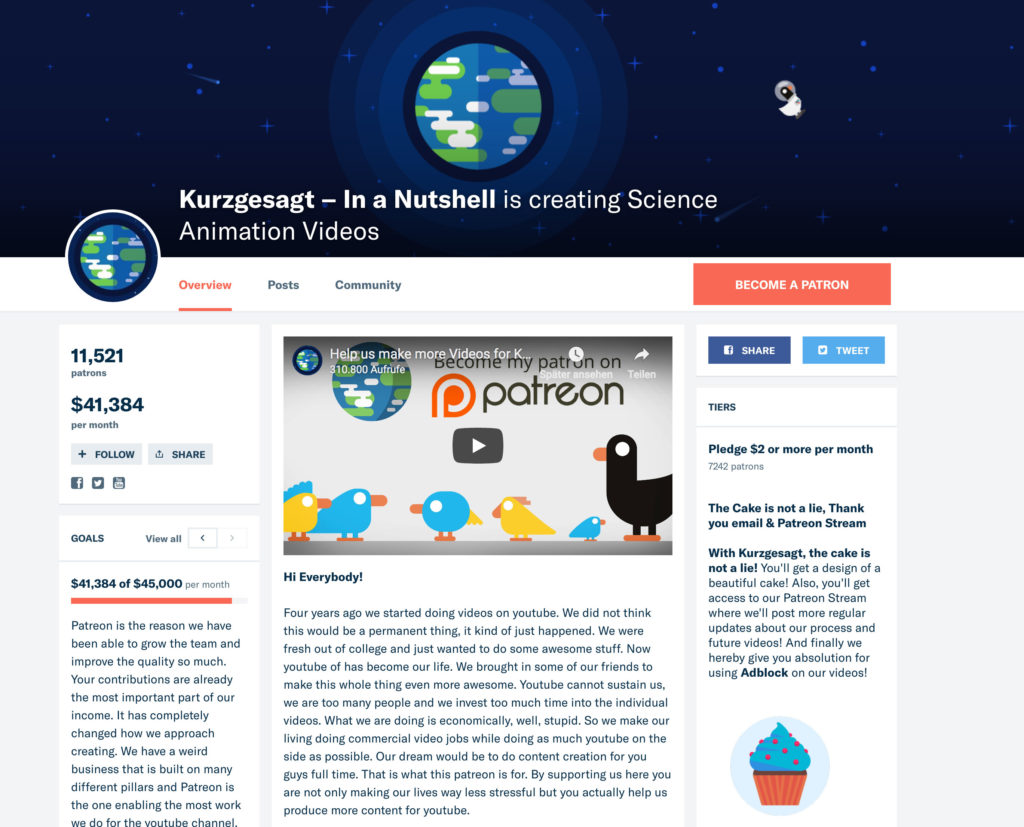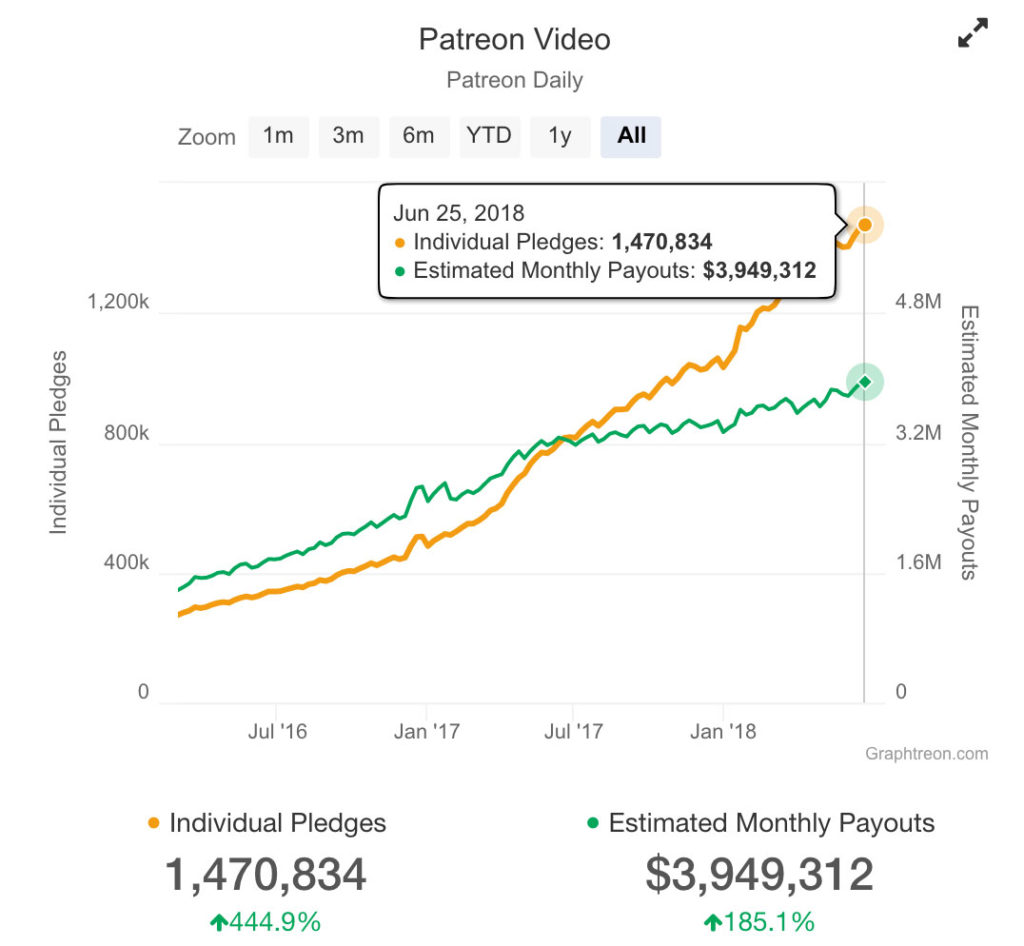
“Kurzgesagt” on Patreon (Screenshot 6-2018)
The platform Patreon was founded in 2013 by Sam Yam (formerly of AdWhirl) and the musician Jack Conte. Conte’s personal motivation was dissatisfaction with changes at YouTube. Despite millions of clicks, YouTube paid out only a small share of the advertising revenues it took in for his music videos. Conte and Yam developed an idea for a platform that would be of greater benefit to creative artists. The result was Patreon, equipped with an economic model that eliminates intermediaries and advertising.
The model resembles crowdfunding platforms. But unlike crowdfunding for specific projects and campaigns, Patreon is based on the idea of permanent patronage. The platform sets up a direct, ongoing connection between creators and patrons.
Creators can still use the platform to raise funds for a temporary project in the form of ‘pledges’ – for example for a film project. But the rule and desired goal are lasting commitments. More than 70% of all creatives on Patreon solicit (small) fixed monthly amounts from their patrons. Instead of funding the completion of a single film, this makes it possible to finance filmmaking itself, giving creative artists something like a conditional basic income. A few gallery owners had already introduced a similar model in the art sector by transferring a monthly amount to ‘their artists’ in order to place the emphasis on artistic practice rather than the finished product (film or work of art).
Currently (as of late June 2018), 117,437 creatives have at least one patron on Patreon. ‘Video’ is the most popular category, followed by comics, games, writing, painting and music. Nearly 33,000 video-creators are currently receiving $3.9 million a month from their patrons! The creatives actually get about $3.6 million after the deduction of 5% of turnover and the fees for the money transfer (setting up their own web page is free of charge).
As can be expected, there is a large gap in the distribution of revenues. The leader in the video category is Philip DeFranco with 16,000 patrons. Like Patreon’s founder, the well-known YouTube star has turned his back on YouTube. In May last year he founded the ‘News and Entertainment Network’ with the help of Patreon. Like many others, he criticises YouTube’s new rating rules and monetisation policies, which downgrade videos with less advertising-friendly content – for example the ‘bad’ news on his channel about crises and wars. The categorisation by YouTube’s management then leads not only to lower advertising revenues but also indirectly to a loss of visibility and lower ‘audience ratings’ (see article ).
One of the Top 50 creators on Patreon is the Munich-based Kurzgesagt Design Studio. The specialists in animated educational videos run one of the YouTube channels with the most subscribers. On Patreon, they rank third (11,500 patrons and $41,000 in revenue per month). ‘Kurzgesagt – In a Nutshell’ remark on their page that they are too many people to finance through YouTube alone. They hope that, with the help of Patreon, they will not have to produce advertising videos anymore to make ends meet.
The two German students Jonas & David, who produce ‘video essays’ (Simplicissimus), have made similar comments. In their introduction video on Patreon, they explain that they earned only €568.56 for their work on YouTube in May 2018, which corresponds to an hourly wage of €3.30. On Patreon, they’re already getting $1,483 per month from 416 patrons, without, as they say, having to eliminate non-advertising-friendly terms in their videos like ‘Donald Trump’ or ‘depressing’.

Pledges (orange) and payouts (green) since the platform’s founding @ Courtesy Graphtreon.com
It remains to be seen how the success story will continue – and for whom! Over the past year, the gap between the number of Creator Pledges and the sum of the monthly payout has widened substantially (see chart). That is not a good omen.
Patreon is neither a non-profit organisation nor a philanthropic enterprise. Among the members of the Supervisory Board are former CEOs of Twitter and America Online. Nevertheless, the venture-capital-financed, San Francisco-based company is a real alternative to the platform products of the listed FAANG empires.
1 Trackback